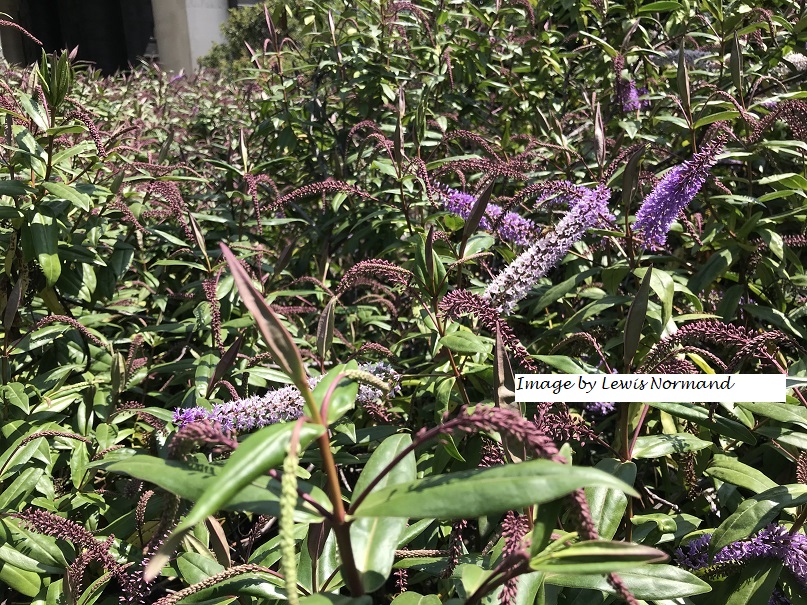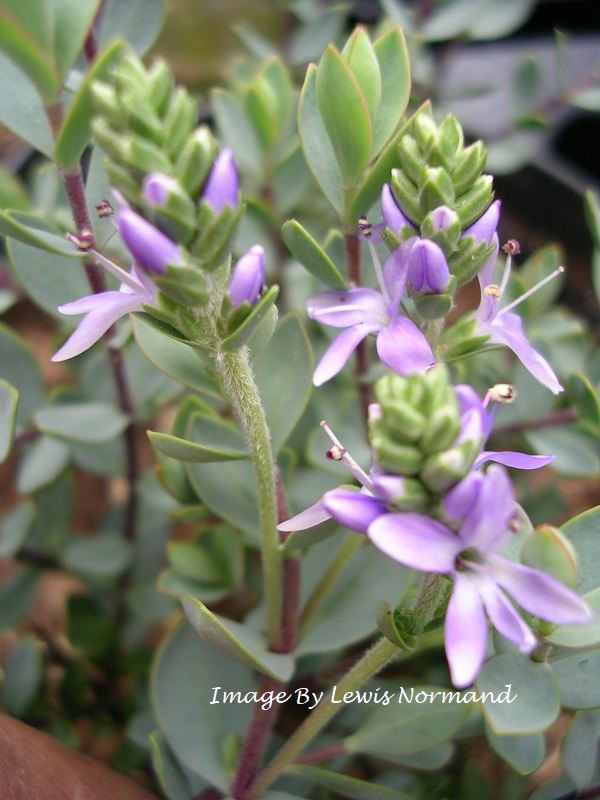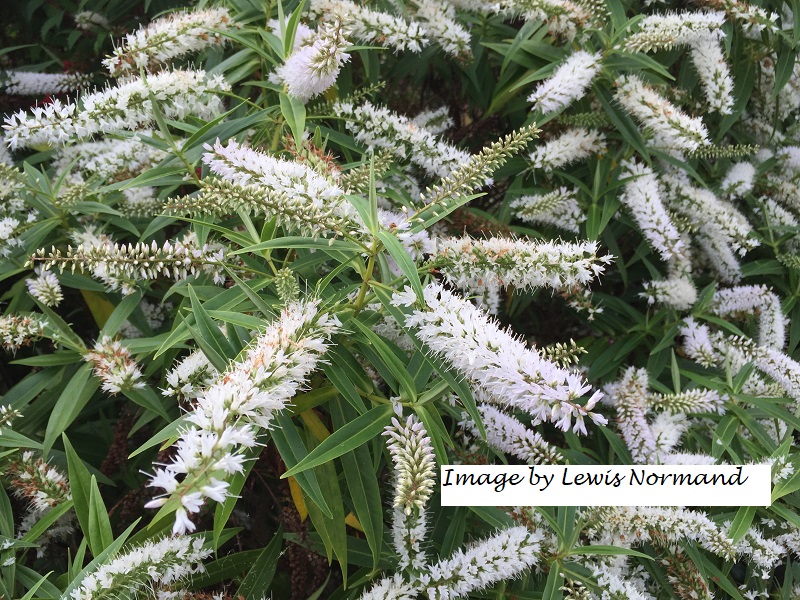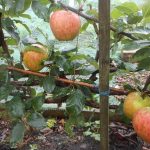Hebes in Scotland
We often have blog posts from guest writers who give us the benefit of their expertise. Many have interest in a particular plant group or family. Our guest writer this time around is Lewis Normand, who also happens to be a Caley Council member. Lewis has a particular interest in Hebes (he is the Hebe Society Social Media Secretary) and has given us some information on the genus in general and some particular favourites of his. Part two of this blog will follow later in the week.
Hebes in Scotland
Often at their best in a coastal spot, this expansive genus of some 104-115 species and well over 1000 cultivars largely all grow well in the UK and probably slightly better in Scotland. As a general rule, the smaller the leaf, the hardier the Hebe, with the largest leaved species and varieties only recommended in freely draining, sheltered spots, especially if inland. They are capable of taking quite low winter temperatures, though will struggle in wet soils when it is cold.
Whilst there are several varieties that have the somewhat negative association with being ‘Carpark Plants’, this is only really because they are tremendously reliable, well-behaved and solid performers. Plants like Hebe ‘Red Edge’, H. topiaria or H. pinguifolia ‘Pagei’ are commonly used in larger planting schemes, including carparks, as very resilient evergreen groundcover. Aside from their undeniable tolerance for abusive pruning, the odd trampling and generally limited care, they just continue to perform in all but the wettest or shadiest of spots. Given fertile, fairly free-draining soil and a sunny position and most Hebes will not just survive but excel and there are many joyously beautiful and worthwhile garden plants to choose from. Ever popular with butterflies and bees and readily trimmable to create semi-formal hedges, massed groundcover and even topiary shapes, they are a useful addition to attract wildlife and even reduce your labours weeding in the garden.
Hebe ‘Midsummer Beauty’ – A larger leaf than most, the young foliage is flushed with a purple hue, which complements the long panicles of rich-purple flowers in summer. In most coastal gardens it will be pretty durable, but if you are inland, it is best planted in a sunny and sheltered corner and ensure that it has good drainage in the winter. When happy, it can get over 1.8m (6’) tall and 2/3 of that in width.

Hebe pimeleoides ‘Quicksilver’ – Often sold in garden centres with winter bedding plants for a splash of evergreen silver in window boxes etc. It is a charming, diminutive plant that marries a tiny blue-green (almost silver) leaf with wiry black stems. Although it does flower, it would be a struggle to call this flower impressive. A perfect Hebe for rock gardens and much more suitable for growing in a pot than most. It will get to around 30cm (1’) high in time and 45cm (18”) wide, though is typically an irregularly shaped, slightly fountain-like in habit.
 Hebe salicifolia – A very variable species with, as the name suggests, willow-like green leaves. At its best when it has finger-sized (and roughly shaped) leaves and grows to become a large shrub of 2m (6’ 7”) tall and a little less wide. It prunes really well and makes a good informal hedge or screen but is particularly good as an evergreen mass at the back of a planted border. In summer, the plant is smothered in dense pendant panicles of pure white flowers up to 13cm (5”) long. In most forms the anthers of each flower are a lovely purple colour. Some forms of the species have significantly smaller foliage (paper-clip sized for want of a better description) and shorter flower-spikes, but will achieve a similar dense, green plant of good garden merit. Like ‘Midsummer Beauty’ it is hugely popular with insects and a good source of nectar. Best given a trim of 10cm (4”) up to 1/3 of its size in spring at least every third year, if not every year. This helps to maintain a dense plant with a good solid covering of foliage and healthy flower volumes.
Hebe salicifolia – A very variable species with, as the name suggests, willow-like green leaves. At its best when it has finger-sized (and roughly shaped) leaves and grows to become a large shrub of 2m (6’ 7”) tall and a little less wide. It prunes really well and makes a good informal hedge or screen but is particularly good as an evergreen mass at the back of a planted border. In summer, the plant is smothered in dense pendant panicles of pure white flowers up to 13cm (5”) long. In most forms the anthers of each flower are a lovely purple colour. Some forms of the species have significantly smaller foliage (paper-clip sized for want of a better description) and shorter flower-spikes, but will achieve a similar dense, green plant of good garden merit. Like ‘Midsummer Beauty’ it is hugely popular with insects and a good source of nectar. Best given a trim of 10cm (4”) up to 1/3 of its size in spring at least every third year, if not every year. This helps to maintain a dense plant with a good solid covering of foliage and healthy flower volumes.











